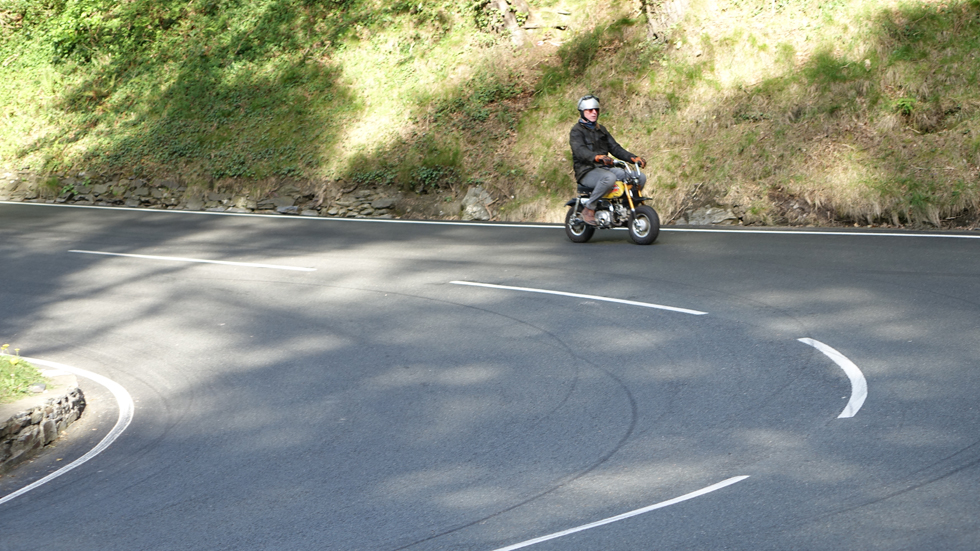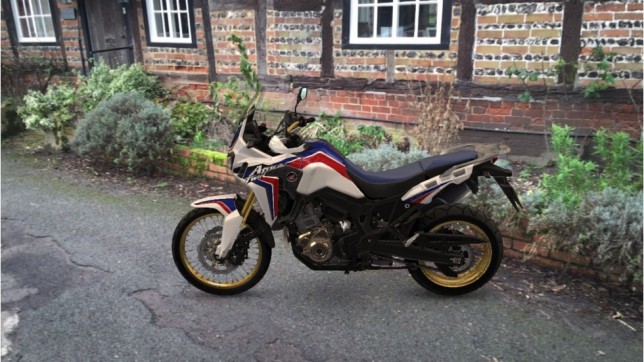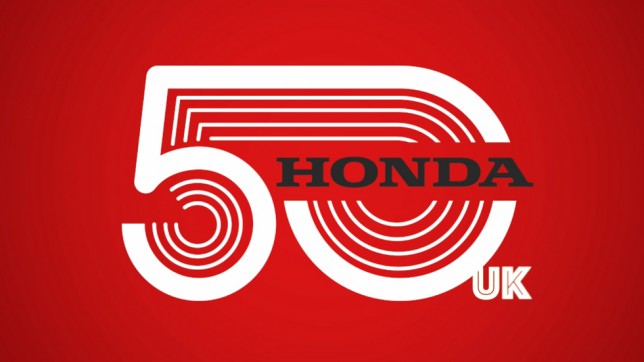The Isle of Man TT races see a week of high speed, high octane racing on the most iconic road circuit in the world. Each year the bravest riders take on the 37.73-mile Snaefell Mountain Course at speeds of up to 200mph, riding the most up-to-date bikes on the planet. But the TT races started in 1907 – and back then speeds were much more leisurely. This special in-depth feature is a personal story that celebrates those early pioneers; a boy’s own adventure on vintage motorcycles with about as much performance as your average lawnmower.
Words by Andrew English
It’s been 30 years since 50cc machines last took part in the motorcycle grand prix circuit and by then the famous TT had already been struck from the GP calendar as it moved to safer permanent purpose-built tracks. With 81 points and three wins in 1983, Stefan Dörfligher was the last-ever 50cc world champion. At the end of that year, the Federation of International Motorcycling cried enough and mandated a 30cc swept volume increase to 80cc. But for our little group of intrepid adventurers the 50cc isn’t obsolete, in fact it’s the basis of our ‘50cc Challenge’ dreamt up nobody-quite-remembers-when and now really happening.
The grand sounding title is really just a posh name for a works outing for the engineers at Caterpillar where my brother William works, and assorted friends and relations. One hour at 50cc was the wildly optimistic target time round the Isle of Man’s iconic and incredibly challenging 37¾-mile Mountain circuit. To put that in perspective, Bruce Anstay’s lap record on a Honda CBR1000RR Fireblade is 17 minutes 6.682 seconds at an average speed of 132.298mph.
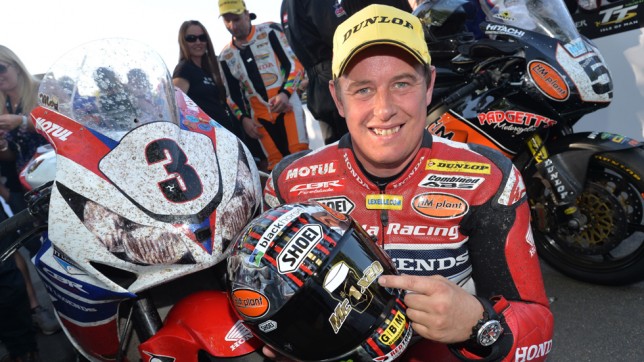
Current Isle of Man TT record holder John McGuinness
Strange days
First, a little bit of context. The real heyday of 50cc GP racing was in the sixties and TT was the jewel in the crown of the calendar. On the Isle of Man, the 50cc Ultra Lightweight class ran from 1962 to 1968 and was last won by Australian Barry Smith on his Derbi at an average speed of 72.9mph. Two years previously it had been won by Ralph Bryans on a works Honda at 85.66mph and in 1967 Stuart Graham won it on a works Suzuki. On the Grand Prix circuit and the Island TT course, this Lilliputian racing series was a Titanic battle between Honda and Suzuki who treated the formula as a technological battle ground. At their zenith, these fiendishly complex machines, engineered with spider’s web precision, revved to 22,000rpm and had as many as 14 gears.
‘It seems strange,’ recalls former rider Stuart Graham, ‘but the smaller the machine the harder it is to ride. You really had to screw yourself up to go round the Mountain. It was really bumpy and those early two strokes were notoriously tricky to keep running perfectly. And then there was that tiny power band, the Japanese didn’t know much about torque – we used to say the Suzukis had no power at 17,000rpm and were seized by 17,600rpm. When the engineer said, “Stuart-san, we have more power,” I used to ask: “and how many more gears is that?”’
Pushing the limits
Honda persevered with more sophisticated tiny four-stroke engines and the fierceness of this unlikely competition made for fearsomely expensive racing. The Honda Racing Corporation (HRC) developed no less than four separate 50cc, air cooled, four stroke, overhead cam, twin cylinder, GP racing machines between 1962 and 1965, all of which took to the TT stage. And boy did those Honda’s rev. Away from the island for a moment, Ralph Bryans once described the inaugural Suzuka Grand Prix, where he’d revved his works Honda to over 22,000rpm in an effort to win. Honda’s engineers denied their engine could rev that high, but Honda founder, Soichiro, had ordered the still hot, oily engine to be taken out of the frame, placed on a white leather seat in his car and taken to the research department to prove it could sustain such revs.
Bryans also described how the bicycle calliper brakes Honda had used to save weight got so hot they’d melted the tyres’ bead – these guys were really pushing the boundaries. That’s something that our 50cc Challenge resolutely would not do, except perhaps when it comes to the boundaries of human patience and the mechanical skills of the group.
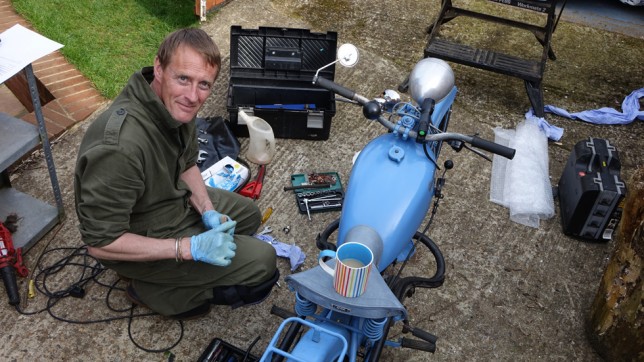
Andrew English fixing his vintage Peugeot P53
The French connection
My own journey to the Isle of Man TT 50cc Challenge began three months previously on the harbour at the Brittany Ferries Terminal in St Malo. A gendarme stopped me as I pushed my just purchased powder blue Peugeot P53 onto the ferry. ‘Peugeot, huh,’ shrugged the gendarme, ‘quelle annee?’ I said ‘1940’ in my best French in reply. Handing back my passport he smirked, ‘good luck.’
This was to be my steed for the toughest road racing circuit in the world – others in the party would be more sensible and buy Hondas of various flavours, more of which in a moment. Not many P53s were built after the start of hostilities. Peugeot’s large catalogue had shrunk to just a couple of machines, which were turned out at the Beaulieu-Valentigney factory near Montbéliard under German occupation.
These 100cc two stroke, single pot vélomoteurs were advertised as ‘Élégant, Robuste et Puissant’. Yet despite their three speed, hand change transmissions and price of 3750 francs, they were far from exotic. These single pot machines were vin ordinaire for workers and postmen. Most of them were requisitioned and a few ended up in the hands of the French resistance. Tucking into my lunch on the ferry home I fondly imagined the stories that my latest acquisition a CL, complete with 150-rated phare (headlamp) and twin exhausts, had to tell.
Its 100cc cylinder capacity should have made it ineligible for The Challenge, but the entry committee (my brother, who owns an identical machine) decided its age, lambent performance and staggering unreliability would put it on an equal footing with a field of 11 rivals. These included Alex Kracke’s late-model Yamaha FS1E and Ray Kinch’s Seventies Suzuki 50, together with three Honda cubs, a 70cc model mysteriously known as Bethaney, in the hands of Stuart ‘Stewy’ Bradford and two 90cc machines, one a spare and the other in the hands of Chris Crawford.
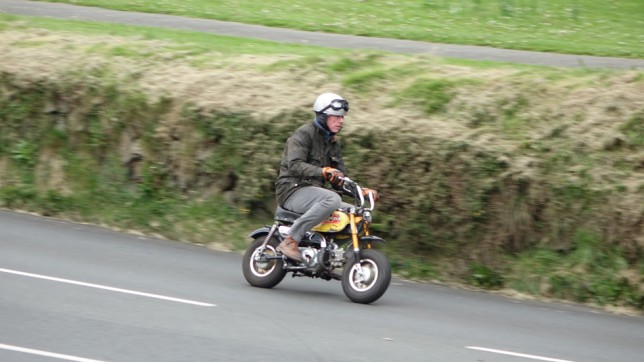
Steve Crooks tackling the 50cc Challenge on a Honda Monkey bike
Proving time
As you can see the 50cc rule had rather fallen by the wayside, but all these machines are still charmingly, ahem, slow. Battered by winds and the slipstream of superbikes also out having fun (the Isle of Man is a magnet year round to enthusiastic bikers, helped by a complete lack of speed limits away from the towns and villages), subject to vagaries of traffic lights and road works, we set out.
Bob Davies rode his Suzuki machine around the Mountain Circuit in one hour and 16 minutes at an average speed of 29.79mph. Not that anyone was counting. This wasn’t a time trial, just a bit of an outing. Hard work though for my youngest (and fittest) brother, Ed, who thanks to Light Pedal Assistance on the 1.3bhp 50cc Raleigh RM1, bought it home in two hours and eight minutes, averaging 17.7mph.
Thorber’s Excelsior was by everyone’s estimate the scariest machine on the Challenge. With scant fork trail and weird frame geometry, it was really hard to pedal and the handlebars shook so much you didn’t dare take your hands off the grips. So it was a stirred but not shaken Thornber, who bought it home in an utterly heroic one hour and 40 minutes, averaging 22mph.
With the famous 110 year old road route already partly dressed in preparation for the arrival of the race machines, riders, mechanics and up to 40,000 fans for the TT proper, which was due to start just a few weeks later, there was an evocative feeling riding (and pedalling) past signs marking famous corners such as Ballaugh Bridge, Verandah, or Cronk-ny-Mona. We stopped to take photographs at the train station on Snaefell where a policeman stood by the side of the road, trying to keep somewhat over-enthusiastic riders on the right side of the law. ‘If that machine gets out of control, you are lying right where he’ll have his accident,’ he warned, biting back a giggle as my other brother William gently puttered past.
Steve Crooks got his 50cc Honda monkey bike around in a brisk one hour and 16 minutes, although Alex Kracke, who had only been riding a bike for two weeks, approached the TT circuit gently on his Yamaha, with Ray Kinch running between them on the Suzuki 50. Over at the Honda camp, feelings spilled over that night in the Creek Inn in Peel.
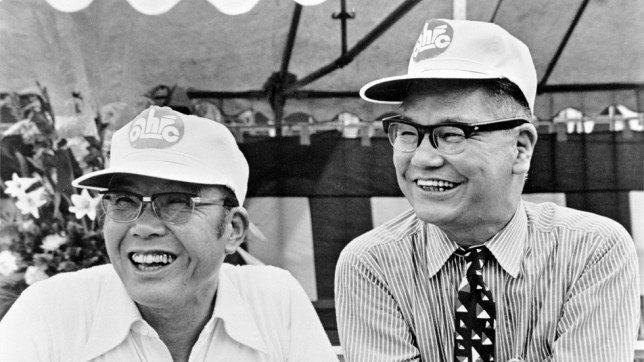
Soichiro Honda (left) and Takeo Fujisawa
‘Of course your machine is faster, it was developed by Dani Pedrosa,’ said Stuart ‘Stewy’ Bradford, straining logic to explain why his Honda 70 Super Cub wasn’t as fast as Chris Crawford’s 90cc equivalent. ‘Exactly how can Dani Pedrosa have developed a machine introduced 27 years before he was born?’ enquired Thornber. We all agreed it seemed a bit unlikely that the mighty Honda Racing Corporation pulled their Moto GP star off development of the RC213V and set him to titivating a scooter.
Shaping the future of Honda
There is, however, a connection between the Honda Cub and the Isle of Man, though it comes through Soichiro Honda rather than Pedrosa, of course. Soichiro toured Europe in the 1950s when he was first inspired to enter and win the TT. But his finance and marketing genius, Takeo Fujisawa, wanted to make a profitable small commuter bike to fill a growing market. He dragged a bored Soichiro round dealers and factories in Europe and convinced his boss to build a machine that would jump the technology gap over those small scooter designs.
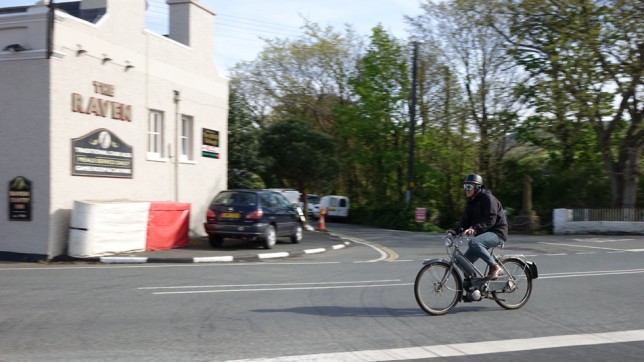
A vintage Raleigh RM1 negotiating the Isle of Man course
He also stipulated the slightly eccentric requirement that Honda’s machine would be capable of being ridden with one hand while carrying a tray of noodles. Using one of the biggest polyester mouldings then available to protect the engine and electrics, as well as the high performance technology developed on the TT, the Super Cub was born.
As to my 100cc Peugeot and William’s identical machine, it was a partial tale of woe. Those early machines only just worked when they were new. I kicked and kicked it over, but nothing. Eventually we managed to get Will’s green machine turning over reliably enough to take some pictures of it running under its own smoke.
Our adventure has been more Wacky Races than a proper tribute to those heady days of the 50cc GP wars. And our frankly pathetic average speeds don’t even hint at the heroics needed to average over 80mph around here with a screaming motor closing in on 20,000rpm, but the scale of the efforts of those engineers is perhaps more staggering now than ever before.
‘It was a weird time,’ recalled Stuart Graham of the 50cc years at the TT and the wider GP scene. ‘The Japanese were pushing the world ahead of them technologically. It all seems pretty amazing now, almost more of an achievement than it felt at the time.’ It was a weird time for us too. Never has so much effort gone into going so slowly, though I just wish my bike had gone round the Mountain just once. Maybe next year I’ll use a Honda Cub.
Dream looks back on TT week 2014
Fans were treated to another week of fabulous racing over the TT week this year. John McGuinness was suffering with a wrist injury and struggled for pace in the Superbike and Senior races, but won his 21st TT race in the SES TT Zero event. This relatively new event is for electric motorcycles and McGuinness‚ Mugen Shinden was the class of the field, averaging 117.366mph from a standing start over 1 lap. Mugen have long been technical partners with Honda and are pushing at the forefront of zero emission technology and proving its durability in this toughest of racing environments.
There was more success for Honda in the prestigious Superbike race, with Honda factory rider, Conor Cummins, securing a podium position and fourth place man Bruce Anstey setting a new outright lap record on his Valvoline Racing Honda Fireblade. Incredibly, Anstey averaged 132.298mph over the course and will be back next year looking for victory.



